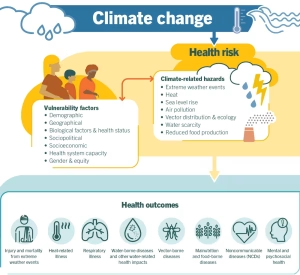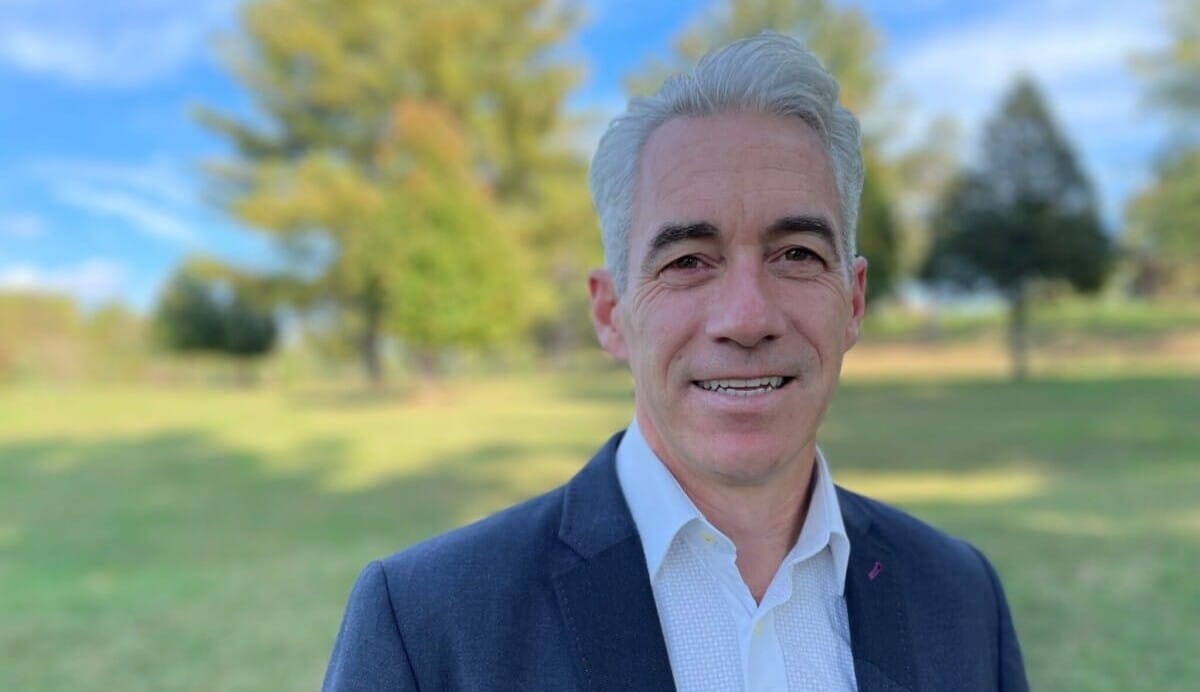New Report Highlights the Delta Conveyance Project as the Single Most Effective Action for a Sustainable Water Future for California – California Department of Water Resources (.gov)

Report on California’s State Water Project Climate Adaptation Strategy and Alignment with Sustainable Development Goals
Executive Summary: Securing Water Resilience in a Changing Climate
A report by the Department of Water Resources (DWR) outlines a new climate adaptation strategy for the State Water Project (SWP), which supplies water to 27 million Californians. The strategy addresses the urgent need to modernize critical water infrastructure in the face of climate change, directly aligning with the principles of several Sustainable Development Goals (SDGs). The findings emphasize that a portfolio of actions, with the Delta Conveyance Project as a cornerstone, is essential to ensure continued water reliability, thereby supporting SDG 6 (Clean Water and Sanitation) and SDG 11 (Sustainable Cities and Communities).
Core Challenge: Climate Change and Water Security
The SWP faces significant threats from climate change, which jeopardize its ability to provide a stable water supply. These threats undermine progress toward key global sustainability targets.
- Climate Stressors: The system is increasingly impacted by hotter temperatures, more extreme storms, severe droughts, and rising sea levels.
- Impact on Water Deliveries: Projections indicate a likely long-term decline in average annual water deliveries from the SWP.
- Relevance to SDG 13 (Climate Action): This situation highlights the critical need for robust adaptation strategies to strengthen resilience and adaptive capacity to climate-related hazards, as called for in Target 13.1. A failure to adapt threatens public health, economic stability, and the sustainability of communities reliant on the SWP.
A Portfolio Approach to Climate Adaptation
The DWR’s strategy concludes that no single action is sufficient to counteract the impacts of climate change. A multi-faceted approach is required to build a resilient water system. The plan evaluates five primary actions to climate-proof the SWP.
- The Delta Conveyance Project
- Infrastructure System Maintenance and Restoration
- Forecast-Informed Reservoir Operations (FIRO)
- Additional South-of-Delta Water Storage
- Integrated Implementation of Combined Strategies
Analysis of Key Strategies for Sustainable Infrastructure
The report provides a detailed analysis of the most promising actions, evaluating their potential to contribute to a sustainable and resilient water future.
- The Delta Conveyance Project: This is identified as the single most effective strategy.
- It contributes to SDG 9 (Industry, Innovation, and Infrastructure) by proposing modern, resilient infrastructure, including two new intakes and a tunnel to move water more securely.
- It safeguards water deliveries against seismic events and levee collapse, directly supporting SDG 11 by making communities safer and more resilient.
- The project amplifies the benefits of other strategies and improves the SWP’s ability to capture storm runoff, a critical adaptation to changing weather patterns under SDG 13.
- Infrastructure Maintenance:
- Designated as a first-priority measure, this includes repairing subsidence-damaged sections of the California Aqueduct.
- This action is fundamental to upholding SDG 9 by ensuring the reliability and sustainability of existing infrastructure.
- Forecast-Informed Reservoir Operations (FIRO):
- Considered a safe, low-cost strategy for immediate implementation.
- While its impact on water supply is relatively small, it represents an innovative adaptation that enhances water management efficiency, contributing to the goals of SDG 6 and SDG 13.
- South-of-Delta Storage:
- Viewed as a promising third-priority action.
- Its effectiveness is significantly limited without the implementation of the Delta Conveyance Project, underscoring the need for an integrated approach to water resource management as envisioned in SDG 6.
Conclusion: Advancing Sustainable Development Through Integrated Water Management
The SWP Adaptation Strategy provides a science-based framework for ensuring California’s water security. The report confirms that a combination of infrastructure modernization, operational innovation, and strategic maintenance is necessary to combat diverse climate stressors. By implementing this portfolio of actions, the DWR can secure reliable water deliveries and advance California’s commitment to the Sustainable Development Goals, particularly those focused on clean water (SDG 6), resilient infrastructure (SDG 9), sustainable communities (SDG 11), and climate action (SDG 13).
1. SDGs Addressed in the Article
The article highlights issues and actions that are directly connected to the following Sustainable Development Goals (SDGs):
- SDG 6: Clean Water and Sanitation
- The article’s primary focus is on the management of water resources to ensure a reliable supply for millions of people. It discusses strategies to maintain “reliable water deliveries to 27 million Californians” and protect “Delta water quality during drought,” which are central to SDG 6.
- SDG 9: Industry, Innovation and Infrastructure
- The proposed solutions involve significant infrastructure projects. The article details the “Delta Conveyance Project,” which includes building “two new intakes and a tunnel,” and emphasizes the need for “continued maintenance and additional restoration of the infrastructure system, including repairing subsidence-damaged sections of the California Aqueduct.” This aligns with building resilient and sustainable infrastructure.
- SDG 11: Sustainable Cities and Communities
- The State Water Project (SWP) supplies water to numerous communities, including those in the “South Bay, Central Coast, South Coast, Inland Empire, and Kern County.” The strategy aims to make these communities more resilient by safeguarding water supplies against disasters like “levee collapse in the Delta” and “earthquakes.”
- SDG 13: Climate Action
- The entire “State Water Project Adaptation Strategy” is a direct response to climate change. The article explicitly states the plan is designed to adapt to “hotter temperatures, more extreme storms, more severe droughts, and higher sea levels,” which is the core of climate action and adaptation.
2. Specific SDG Targets Identified
Based on the article’s content, the following specific SDG targets can be identified:
- Target 6.4: Substantially increase water-use efficiency and ensure sustainable withdrawals and supply of freshwater.
- The article addresses this target by focusing on a strategy to “maintain reliable water deliveries” and “offset much of the decline” in water supply caused by climate stressors like “greater aridity and more powerful storms.”
- Target 6.5: Implement integrated water resources management at all levels.
- The Department of Water Resources (DWR) is implementing a comprehensive “State Water Project Adaptation Strategy” that bundles “potential strategies into portfolios” and involves collaboration “in partnership with the SWP contractors, other state and federal partners and local and regional agencies.” This represents an integrated approach to water management.
- Target 9.1: Develop quality, reliable, sustainable and resilient infrastructure.
- The article directly supports this target by proposing the “Delta Conveyance Project” to “safeguard water deliveries from disruption” and provide “protection against earthquakes.” The emphasis on repairing the “California Aqueduct” also contributes to maintaining reliable infrastructure.
- Target 11.5: Significantly reduce the number of people affected by disasters, including water-related disasters.
- The strategy aims to protect communities from water-related disasters. The article states that the Delta Conveyance Project would “safeguard water deliveries from disruption in the event of levee collapse in the Delta” and protect against earthquakes, thereby reducing the impact of such disasters on 27 million people.
- Target 13.1: Strengthen resilience and adaptive capacity to climate-related hazards and natural disasters.
- The “State Water Project Adaptation Strategy” is a clear example of this target in action. The article describes it as a plan to “modernize the State Water Project to Adapt to a Changing Climate” and details actions like “Forecast-Informed Reservoir Operations” to manage climate-related hazards.
3. Indicators for Measuring Progress
The article mentions or implies several indicators that can be used to measure progress towards the identified targets:
- SWP Annual Average Water Deliveries
- The article states that “climate change makes a long-term decline in SWP annual average water deliveries likely.” The success of the adaptation strategy can be measured by its ability to “offset much of the decline,” making the volume of water delivered a key performance indicator.
- Implementation of the State Water Project Adaptation Strategy
- The development and execution of the strategy itself is an indicator of progress. The article mentions specific actions within the plan, such as the implementation of “Forecast-Informed Reservoir Operations, or FIRO,” which can be tracked to measure progress on climate adaptation.
- Construction and Maintenance of Resilient Infrastructure
- Progress can be measured by the status of key infrastructure projects. The article identifies the “construction of the Delta Conveyance Project” and the “repairing subsidence-damaged sections of the California Aqueduct” as priority measures. The completion of these projects would serve as a direct indicator of increased infrastructure resilience.
4. Summary Table of SDGs, Targets, and Indicators
| SDGs | Targets | Indicators |
|---|---|---|
| SDG 6: Clean Water and Sanitation |
|
|
| SDG 9: Industry, Innovation and Infrastructure |
|
|
| SDG 11: Sustainable Cities and Communities |
|
|
| SDG 13: Climate Action |
|
|
Source: water.ca.gov

What is Your Reaction?
 Like
0
Like
0
 Dislike
0
Dislike
0
 Love
0
Love
0
 Funny
0
Funny
0
 Angry
0
Angry
0
 Sad
0
Sad
0
 Wow
0
Wow
0

















































:focal(1500,1000)/https://media.globalcitizen.org/a6/9a/a69a4720-d8a1-4715-b596-18738d03c05c/rotary_polio_hero_image.jpg?#)






/countries/sri-lanka/photo-credit---dmc-sri-lanka.tmb-1200v.jpg?sfvrsn=dc298bcc_1#)
















